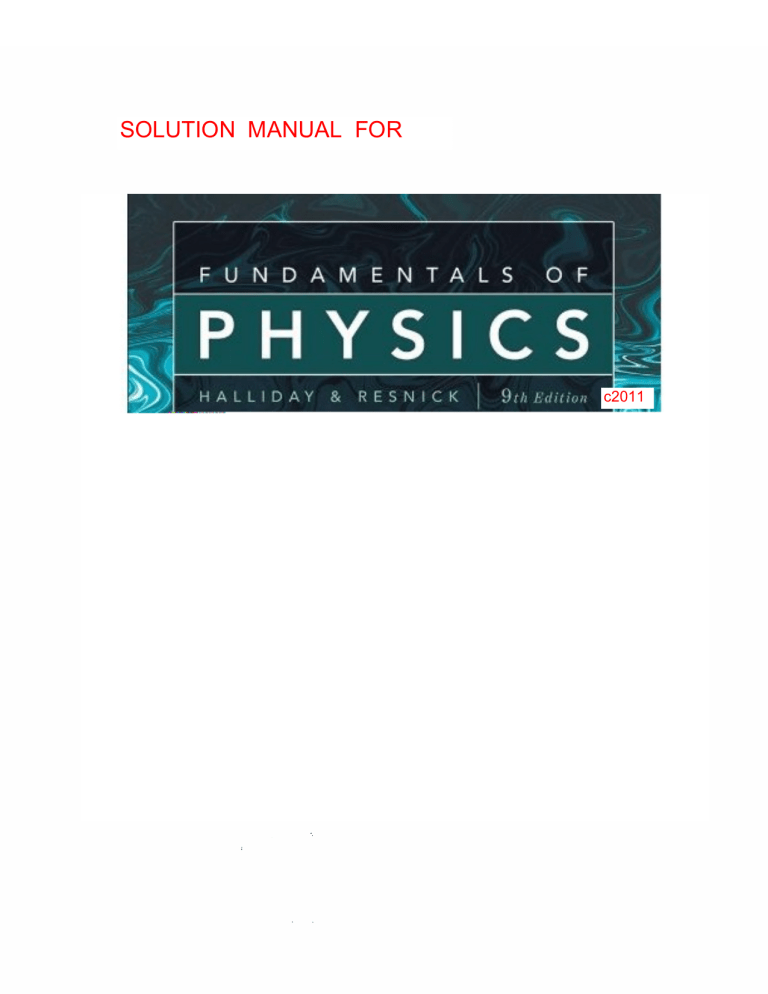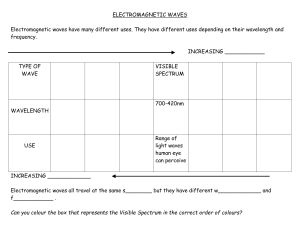
SOLUTION MANUAL FOR c2011 VOLUME 1. PART 1. 1 Measurement. 2 Motion Along a Straight Line. 3 Vectors. 4 Motion in Two and Three Dimensions. 5 Force and Motion — I. 6 Force and Motion — II. 7 Kinetic Energy and Work. 8 Potential Energy and Conservation of Energy. 9 Center of Mass and Linear Momentum. 10 Rotation. 11 Rolling, Torque, and Angular Momentum. PART 2. 12 Equilibrium and Elasticity. 13 Gravitation. 14 Fluids. 15 Oscillations. 16 Waves — I. 17 Waves — II. 18 Temperature, Heat, and the First Law of Thermodynamics. 19 The Kinetic Theory of Gases. 20 Entropy and the Second Law of Thermodynamics. VOLUME 2. PART 3. 21 Electric Charge. 22 Electric Fields. 23 Gauss’ Law. 24 Electric Potential. 25 Capacitance. 26 Current and Resistance. 27 Circuits. 28 Magnetic Fields. 29 Magnetic Fields Due to Currents. 30 Induction and Inductance. 31 Electromagnetic Oscillations and Alternating Current. 32 Maxwell’s Equations; Magnetism of Matter. PART 4. 33 Electromagnetic Waves. 34 Images. 35 Interference. 36 Diffraction. 37 Relativity. PART 5. 38 Photons and Matter Waves. 39 More About Matter Waves. 40 All About Atoms. 41 Conduction of Electricity in Solids. 42 Nuclear Physics. 43 Energy from the Nucleus. 44 Quarks, Leptons, and the Big Bang. Chapter 1 1. Various geometric formulas are given in Appendix E. (a) Expressing the radius of the Earth as R = ( 6.37 × 106 m )(10−3 km m ) = 6.37 × 103 km, its circumference is s = 2π R = 2π (6.37 × 103 km) = 4.00 × 104 km. (b) The surface area of Earth is A = 4π R 2 = 4π ( 6.37 × 103 km ) = 5.10 × 108 km 2 . 2 (c) The volume of Earth is V = 4 π 3 4π R = 6.37 × 103 km 3 3 ( ) 3 = 1.08 × 1012 km3 . 2. The conversion factors are: 1 gry = 1/10 line , 1 line = 1/12 inch and 1 point = 1/72 inch. The factors imply that 1 gry = (1/10)(1/12)(72 points) = 0.60 point. Thus, 1 gry2 = (0.60 point)2 = 0.36 point2, which means that 0.50 gry 2 = 0.18 point 2 . 3. The metric prefixes (micro, pico, nano, …) are given for ready reference on the inside front cover of the textbook (see also Table 1–2). (a) Since 1 km = 1 × 103 m and 1 m = 1 × 106 μm, ( )( ) 1km = 103 m = 103 m 106 μ m m = 109 μ m. The given measurement is 1.0 km (two significant figures), which implies our result should be written as 1.0 1




